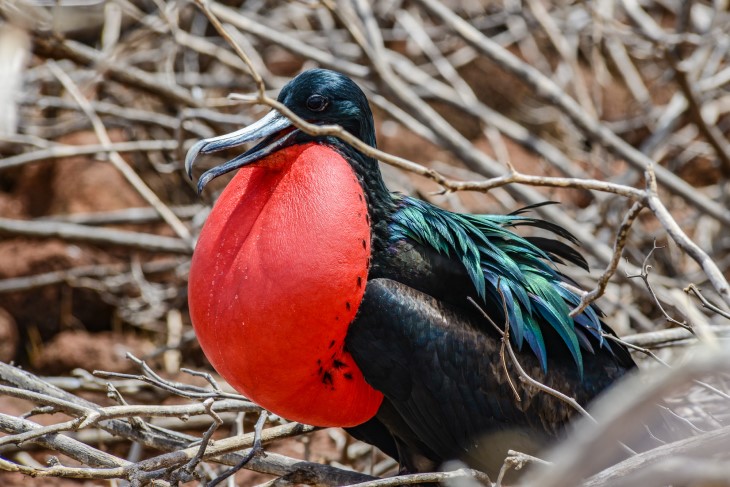
SIGN UP TO RECEIVE
15% OFF
IN YOUR NEXT TOUR
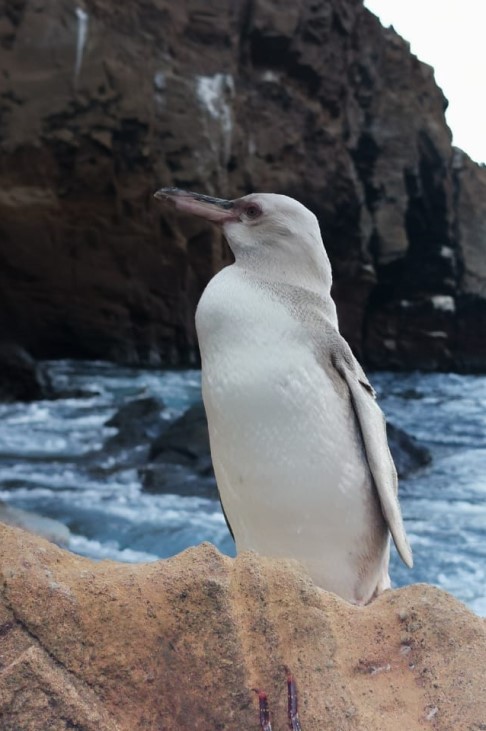
A rare white penguin is spotted in Galapagos
SCROLL DOWN TO READ
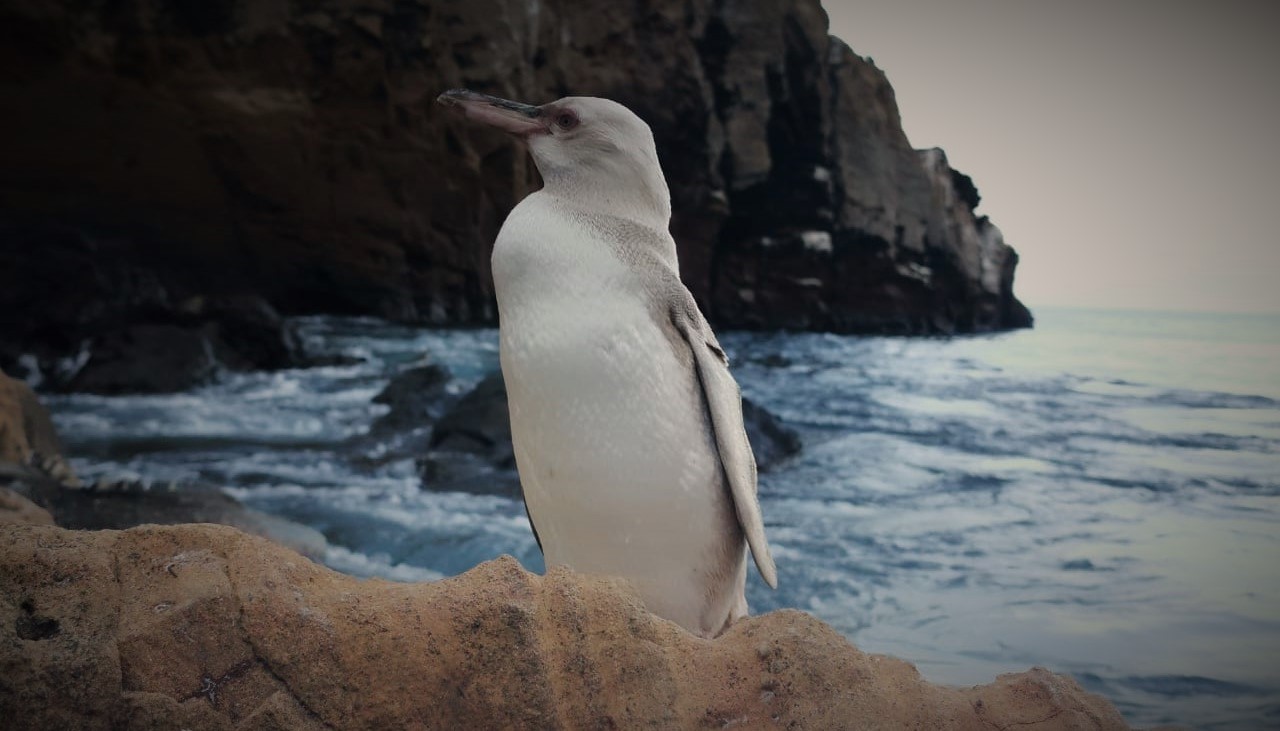
A rare white penguin is spotted in Galapagos
SCROLL DOWN TO READ
A rare white penguin is spotted in Galapagos
The Galapagos penguin specimen has a totally white plumage due to leucism, a genetic peculiarity motivated by a recessive gene that determines the white color of certain specimens. Found in perfect health, its discovery has been a pleasant surprise for the entire marine reserve.
The white penguin was discovered by a Naturalist Guide during a dinghy ride along the western of Isabela Island. Scientists from the Galapagos National Park reviewed the photographs and believe that the white color could be due to a genetic condition known as leucism, which produces a partial loss of pigmentation in the plumage or fur of the animals. This syndrome differs from albinism because the animal "maintains the normal color of its eyes" and they are also more resistant to sunlight. The genetic peculiarity of leucism, originated in a recessive gene, means that the animal, in this case a penguin, has completely white plumage, although to confirm this it will be necessary to capture it and perform genetic analysis.
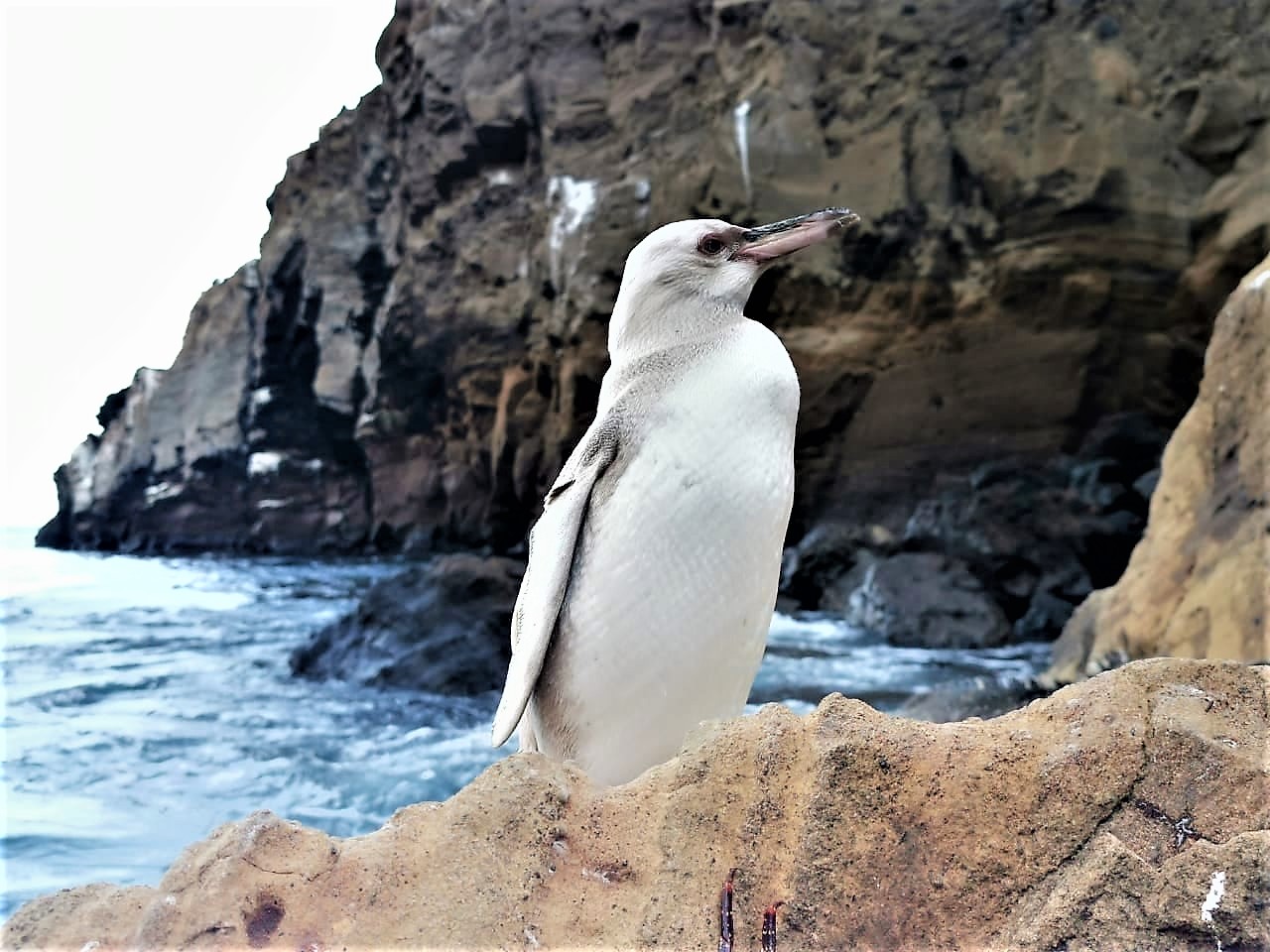
Isabela Island is the largest of the islands of the Galapagos archipelago and a wide range of native and endemic animals coexist on it, including penguins, marine iguanas, blue-footed boobies, the flightless cormorant, and giant tortoises. The endemic population of the islands belongs to the species (Spheniscus mendiculus), the third smallest after the New Zealand blue penguin (Eudyptula minor) and the Australian Fairy Penguin (Eudyptula novaehollandiae). Weighing just 2.5 kilos, the adult Galapagos penguin usually has a black head with two fine white lines that come out of the eyes towards the chin, as well as a white chest separated at the neck by a black stripe.
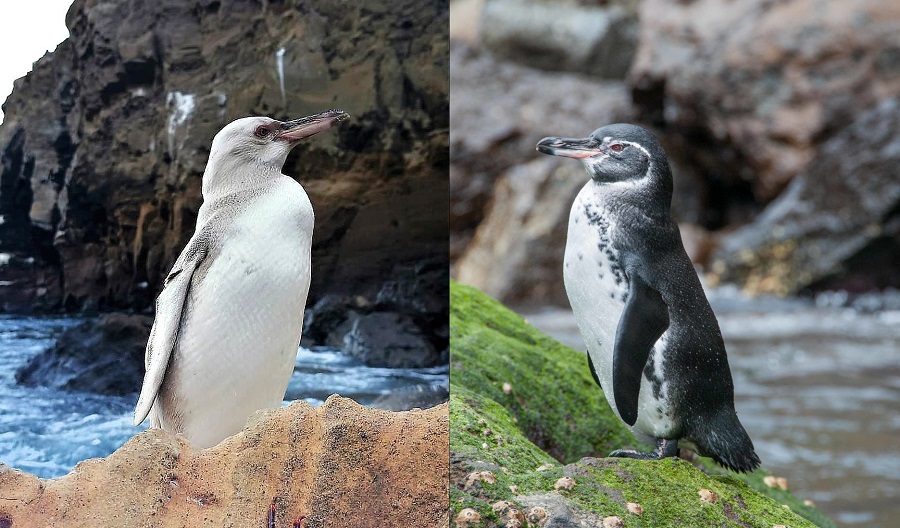
But the one discovered by the naturalist, is totally white plumage and some gray shades, according to the disseminated photographs, being also the first of its kind sighted by the National Park Directorate, which usually permanently monitors the nesting areas to carry out controls of species and thus provide them with better survival conditions.
In Galapagos there have been cases of albinism or leucism in lobsters, finches, sharks, lizards, among others, this being the first record of a penguin with this condition. In the last monitoring of the Galapagos penguins and flightless cormorants, carried out in September 2020, the marine reserve added record figures: a total of 2,290 cormorants and 1,940 penguins were recorded, the highest values since 1977 and 2006 respectively.
